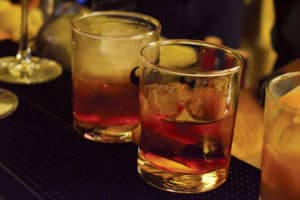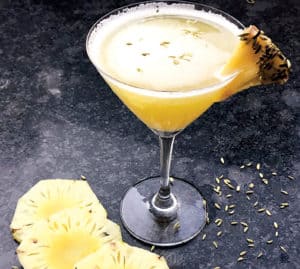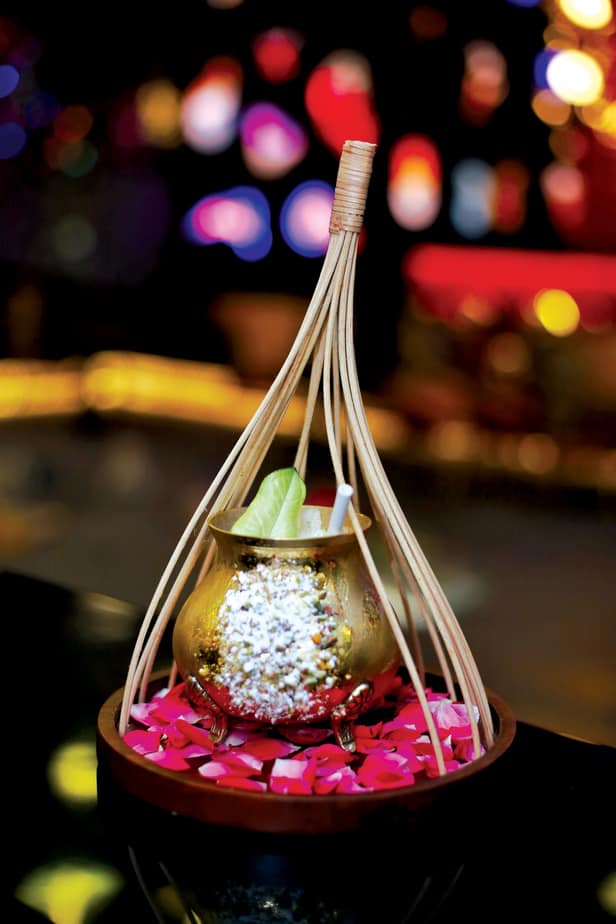In the ever-evolving F&B industry, cocktails form a crucial part of the dining experience. Mixologists are experimenting as consumers look for new creations and concoctions
On a Facebook group for foodies, someone wants to know where he can find good cocktails in Delhi and the recommendations pour in—a long list indeed. Cocktails seem to garner a lot of interest as urban dwellers search for more esoteric drinking experiences. Popularity
Arranging the bar counter, mixologist Pankaj begins the cocktail class at Tease Bar, Taj City Centre, Gurugram. He has already crafted some recipes and the participants just need to follow the instructions. Before that, there is a demo, familiarity with different ingredients, introduction to the measuring cups and different glasses, how to shake and stir and more tips. The class ends with a contest—the best cocktail gets a prize. With gin and vodka-based cocktails being the most common, there is a rush to win this.
At Playground Bar, JW Marriott Aerocity, 15 mixologists spend a full-day crafting whiskey-based cocktails. An annual contest by Jack Daniel’s, the first prize is a visit to the Jack Daniel’s distillery in Nashville. Log onto jdryecomp.co.uk and you know that whiskey-based cocktails have been around since the 19th century. The popularity and awareness only seems to be on the rise.
Here & Now
Jump to more recent times at the newly opened Dragonfly, Aerocity. UK-based mixologist Richard Hargroves has crafted cocktails with Japanese whisky, infused gin, flavoured vodkas and more. He last visited India 30 years back. He’s come to a new India now, as “India is a growing market. A lot of ingredients used in the West are still not available here, but the interest has grown,” he says.
With cocktails designed for men and women, Dragonfly offers a must-try Japanese Colada, Lemongrass Whisky Sour and more. Hargroves has worked in UK, Hong Kong, New York City, Cape Town and is setting up a gin brand called ‘Mulberry No.7’ which will be distilled on the outskirts of Delhi.

Prateek Arora, co-founder, QLA, Mehrauli, holds the same opinion about the availability of ingredients, “We are fairly restricted in options. Vermouth has been around for Indian bartenders for some time but boutique options can still be accommodated in top bars. Fernet Branca and Lillet Blanc are getting gradually accepted for their complexity. Boutique gins like Gunpowder Irish Gin and Jodhpur Gin along with special tonic water brands are elevating the status of this liquor category both for cocktails and having G&Ts.”
Some credit this lack to high duties, but others have innovated with the available and Indian ingredients. Food-based drinks becoming a rage, as predicted by Eustacia Huen on forbes.com, Mohit Chopra who handles the bar at Imperfecto Shor Café Aerocity has crafted some amazing drinks with biteables. Intoxicating Powers has Earl Grey infused gin, caramel syrup, egg white, citrus and caramel popcorns. A seasonal but refreshing drink is El Mango with vodka, mango juice, kafir lime.
Chopra finds that people enjoy meals and good times with cocktails. In a music concert, he served cocktails to guests till the wee hours. “Both men and women enjoy them, didn’t see any particular gender going straight for drinks. A lot were over 40 too,” he says debunking some myths about gender preferences and age groups.
Arora says the same thing, “Luckily there’s not too much of a gender divide in cocktail consumption, at least in metros. Men like a well-made Negroni as much as some women like their Vulgare John, one of our signature cocktails at QLA. Our best sellers are Vulgare John and Honeydew Cilantro. While the former is a unique concoction (with a potential to become a classic) made using vodka but reminiscent of a smoky single malt, the latter uses the humble cilantro (coriander) that a lot of us in North India have grown up eating in form of chutneys or as garnishes/tadka for our home cooking.”

However, Puneet Satija, Director F&B, The Lodhi, finds more women and European clientele preferring cocktails. “Women like fruit-based cocktails,” he says. But there is a demand for Campari, Martini, even Champagne-based cocktails. “Sometimes people do want to know more about the ingredients. Most prefer organic ingredients, less sugar and natural products these days. Our most popular drink is Jägermeister Bomb (Rs 1,500 including taxes) and is made with Red Bull.”
Deep diversity
India being a diverse country with each region having its multiple flavours, Arora feels that Tier II cities are yet to come of age. “The classics, yes but not as many craft versions or special ones are popular there.” Siddharth Yadav, Vice President, MRS Group, adds, “Gin and vodka-based cocktails are popular at our hotels—Narendra Bhawan in Bikaner and Suryagrah, Jaisalmer. But I see more guests opting for cocktails rather than city residents who frequent the hotels.” Among the more amazing drinks here is the gin and tonic with cucumber slice and rose petals.
“People are progressive,” says Suchana Bera, marketing specialist who has worked with Campari and Jack Daniel’s in India. Despite different preferences, the tastes have changed and people like to experiment. “People in the southern and western regions are so open to new things. They constantly seek the new.”
As palates have evolved, so have skills. “Bartending is more than just about shaking and mixing a few drinks/ingredients together. It also requires a lot of soft skill training and constant upgradation on the concerned bartender’s part. While bartending is finally getting its due recognition, it will still remain a parallel hierarchy to climb in the growing F&B space. So bartenders have to make their own niche for the restauranteurs and hotels to give them a shot at building a name while making money for their brands. But yes, it can be a rewarding career with regards to remuneration if that’s what it means to go up the ladder,” says Arora.
Adding to this, Satija says, “Many mixologists do go abroad for training. And then a lot don’t come back, as the work there is more lucrative.”
Nothing ever came without a price. Cocktails do have their share of admirers but “due to heavy taxation on alcohol, sourcing is expensive and that affects the final pricing”, explains Arora. The most expensive cocktail on QLA’s menu is LIIT which has five spirits and homemade bitters and a Jagermeister. There are also seasonal batches of special bourbon whiskey infusions “that could be as old as 16 months old and finished with fresh ingredients”.
Delhi restaurants like Farzi and Shangrila’s Grappa Bar also participate in Negroni Week, which has gained popularity across the globe. The website, negroniweek.com, states that it is “a celebration of one of the world’s great cocktails…. Since 2013, Negroni Week has grown from about 120 participating venues to almost 10,000 venues around the world, and to date, they have collectively raised about $2 million for charitable causes”.
Cheers to that!
What’s trending (hic!)
On forbes.com, Eustacia Huen lists the five cocktail trends that have been cited in the annual ‘Culinary + Cocktail Trends Forecast’ launched by Kimpton Hotels & Restaurants. Local
immersions, wellness and community connections will play an important role.
- Elevated mocktails
Instead of your run-of-the-mill mixes with grenadine and fruit juice, there will be more creative use of house-made syrups and tonics, fermented ingredients and non-alcoholic spirits such as Seedlip. In short, 2019’s mocktails will be more “complex and intriguing than ever.”
- Focus on sustainability
Aside from considering sustainability during the design process for new drinks, according to 88% of the bartenders, many have come up with different ways to use their resources more wisely, such as incorporating more edible garnishes, adding bee hives on-site, serving room-temperature cocktails, and portioning fewer ingredients in multiple items.
- Unexpected ingredients and pairings
Who knew chorizo, anchovy, perennial grains, endive, black sapote and blessed thistle could make their way into cocktails? …. Bartenders will take one step further with vegetable cocktails in 2019 and mix in more obscure choices such as tomatillo, chayote, fiddleheads, jicama and sunchoke.
- Mushroom-infused drinks
Nearly 70% of bartenders are coming up with new concoctions using the healthy ingredient, ranging from the more predictable mushroom broth or tea to funkier choices such as fungi Irish coffee, mushroom- and thyme-infused vodka, and mushroom tea mixed with sparkling wine.
- Food-inspired cocktails
Savoury cocktails become more popular. For instance, there are Cacio e Pepe martinis and gyro-inspired gin cocktails with cucumber, mint, Greek yoghurt and lemon. Considering the savory elements that are already found in cocktails nowadays, such as bone broth, Szechuan peppercorns, beets, gravy, and bacon, the sky’s the limit here.





